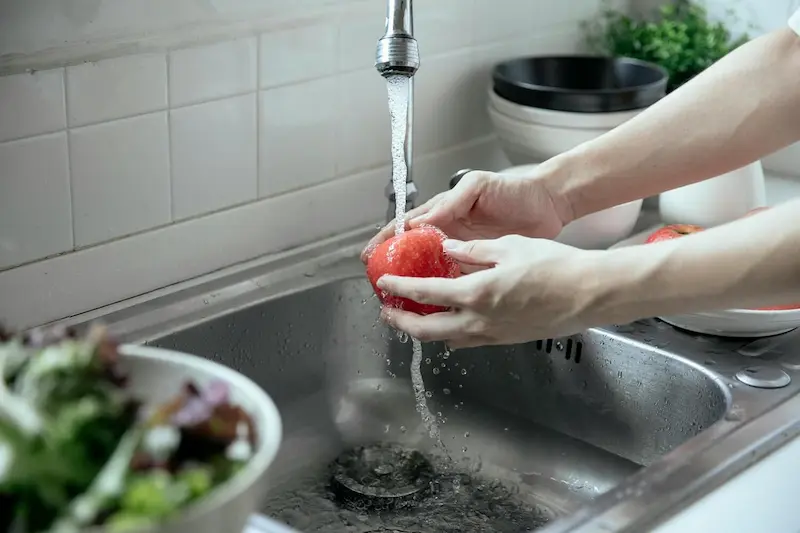What are the 5 C’s of Food Safety? UK Business Guide
Food safety prosecutions can devastate businesses, potentially destroying years of hard work in a matter of days. Under the Food Safety Act 1990, companies face substantial financial penalties, severe reputation damage, and potential closure when enforcement action strikes. With over two million food poisoning cases occurring annually in the UK, regulatory authorities maintain constant vigilance, ready to prosecute businesses that fail to meet legal standards.
Understanding food safety principles isn’t merely about following guidelines, it’s about building a legal fortress around your business. The combination of the World Health Organisation’s proven safety framework with UK regulatory requirements creates a robust defence against the enforcement actions that threaten businesses every year.
If you are currently facing a food safety investigation or have concerns about your compliance, our team of specialist solicitors and barristers can help. At My Commercial Lawyers, we provide specialised defence and guidance for food businesses navigating investigations and prosecutions. Contact us for the detailed legal support that could protect your business from serious consequences.

What is the Food Safety Act 1990 in the UK?
The Food Safety Act 1990 serves as the cornerstone of all food legislation across England, Wales, and Scotland. This extensive framework establishes four golden rules of food safety that every food business must meet:
- Companies must ensure nothing harmful is added to or removed from food products
- Avoid treating food in ways that could damage consumer health
- Guarantee that all food meets the quality and substance that consumers reasonably expect
- Prevent false or misleading presentation in labelling and advertising
Who Enforces the Food Law in the UK?
Enforcement responsibility spans multiple levels of authority in the UK. The Food Standards Agency develops national food hygiene standards and policies, while local authorities carry the primary responsibility for ensuring business compliance through registrations and regular assessments.
Environmental Health Officers conduct the physical inspections that determine whether businesses meet legal requirements. They hold significant enforcement powers, including the ability to issue compliance orders and temporary closure notices when public health risks emerge.
When violations occur, the prosecution process follows a structured path. Investigations typically begin when authorities identify suspected breaches through routine inspections, customer complaints, or food poisoning incidents, often leading to hygiene improvement notices or prohibition notices.
Businesses then receive formal notices detailing alleged violations, have opportunities to respond with explanations or challenges, and may ultimately face court proceedings if issues remain unresolved. Convictions can result in heavy fines, orders to cease operations, and custodial sentences in the most severe instances.

The Complete 5 C's of Food Safety Framework
Beyond these core legal obligations, implementing the 5 C’s framework provides practical compliance guidance. Food safety experts have developed multiple frameworks to help businesses maintain compliance.
The World Health Organisation’s Five Keys to Safer Food provides global guidance alongside the UK’s domestic 4 Cs approach. This integrated approach combines internationally recognised standards with UK domestic requirements, creating a complete 5 C’s system that addresses every critical aspect of food safety management.
- Cleaning forms the foundation of safe food handling. The WHO emphasises that dangerous microorganisms exist everywhere and transfer easily from hands, cloths, and utensils to food products. Effective cleaning removes harmful bacteria from all surfaces, equipment, and hands through careful staff handwashing, detailed area cleaning between tasks, and structured cleaning schedules that prevent waste accumulation.
- Cooking eliminates pathogenic threats through proper temperature management. Thorough cooking kills harmful bacteria, with UK guidance requiring food to reach piping hot temperatures throughout. High-risk items like poultry, rolled joints, and minced meat products require complete cooking and should never be served rare or with pink colouration remaining.
- Chilling prevents bacterial multiplication by maintaining proper storage temperatures. UK regulations mandate cold foods remain at 8°C or below, with optimal refrigeration between 0°C and 5°C. The WHO identifies temperatures between 5°C and 60°C as the danger zone where microorganisms multiply rapidly, making proper chilling and rapid cooling of cooked foods essential.
- Cross-contamination prevention stops bacteria from spreading between raw ingredients, ready-to-eat products, surfaces, and equipment. Prevention requires maintaining separation between raw and cooked foods, thorough handwashing after touching raw ingredients, and using dedicated chopping boards and utensils for different food types.
- Compliance and Control systems provide the organisational framework demonstrating legal adherence. Food Safety Management Systems help businesses identify potential food safety risks and establish procedures to control them. These systems should operate permanently with current records and regular reviews to demonstrate compliance during inspections. Every food business must establish detailed food safety policies covering preparation, handling, and storage procedures.

Essential Training and Documentation Requirements
UK law mandates that food business operators ensure all staff receive appropriate supervision and training relevant to their specific roles. While formal food hygiene certificates aren’t legally required, competency must be demonstrated through on-the-job training, self-study, or previous experience. The Food Standards Agency provides free online courses to support this requirement.
Businesses must register with their local authorities before commencing operations, with new establishments requiring inspection as soon as possible after opening. Established businesses typically face inspections every two years, though high-risk operations may require more frequent visits.
These inspections can occur without prior notice, and Environmental Health Officers possess legal authority to enter premises, take food samples for laboratory testing, and issue ratings from 0 to 5 stars under the Food Hygiene Rating Scheme.

Protecting Your Business Through Complete Compliance
Food safety compliance represents far more than regulatory obligation, it constitutes your primary defence against prosecution and business destruction. The 5 C’s framework provides the systematic approach necessary to meet legal requirements while protecting your operations from the serious repercussions of enforcement action.
Food businesses facing regulatory challenges require specialised legal support. Our experienced solicitors and specialist barristers provide extensive guidance and defence, whether you need compliance advice or are dealing with active investigations and prosecutions. Secure the legal expertise that protects your business reputation and financial stability.

